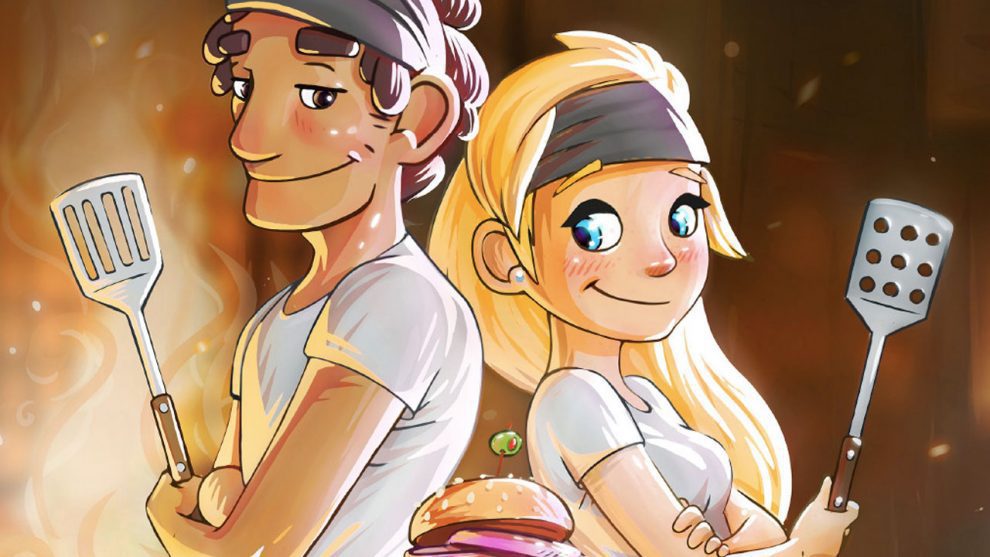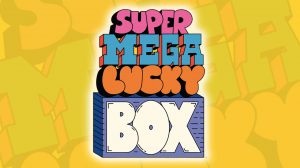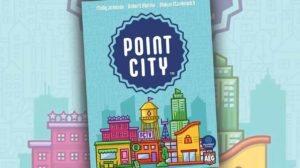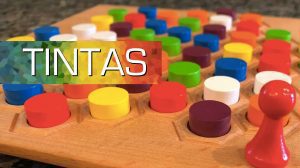In the land of fast food, the burger is king. Not just royalty, but the undisputed, heavyweight, champion of food on the go. Meaty, juicy, portable, “make it your own way”, and oh so tasty.
So when Rule & Make created, and successfully funded the Kickstarter campaign for Burger Up, to the tune of almost $50,000 AUD, a flare went up in the back of my lizard brain telling me to get the game and eat it, I mean play it. Just how well does Burger Up satisfy my inner caveman? Let’s jump in and take a look.
Overview
At its heart Burger Up is a game about constructing the perfect burger; not for you, but for the patrons of your restaurant. You’ll be crafting artisanal sandwiches with ingredients from the market like ground beef, chicken, veggie patties, swiss cheese, avocado, vine ripened tomatoes, fried eggs, and tangy hand-made sauces. Each chef starts with a spatula, and two toasted brioche rolls as a foundation for their edible art: menu items with names such as The O.G. Cheeseburger, Vegetarian Cowboy, Saucy Minx, Turf Burger, and the aptly named Meat-a-Saurus Rex.
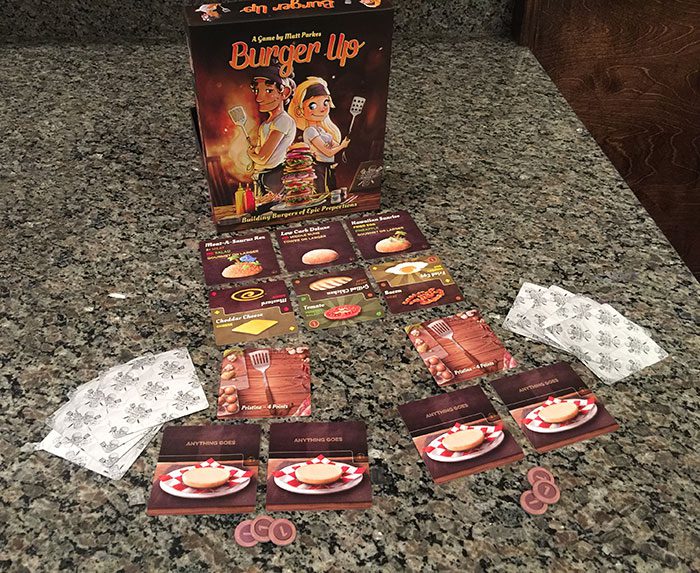
Over the course of 30-45 minutes players will be purchasing ingredients, building their sandwiches, and fulfilling orders from a list of available tickets. When all the orders are filled, and your customers have exited the building, players will tally up their earnings to determine the winner. Let’s take a brief look at how the game plays and then we’ll get to my thoughts.
Going to Market
At the beginning of each player’s turn they’ll get the chance to purchase ingredients from the market for $1 each. As with any market you can only buy what they have in stock. Luckily each ingredient card is double ended, which means that not only are you buying fresh ground beef, but you’re also given the choice of a ripe tomato. Pick up that avocado and you’re also getting a free-range chicken egg.

The market only resets at the end of your turn so you’ll never be able to purchase more than 3, and many times you won’t be able to purchase anything as you’ll be out of money, and therein lies one of the issues with the game.
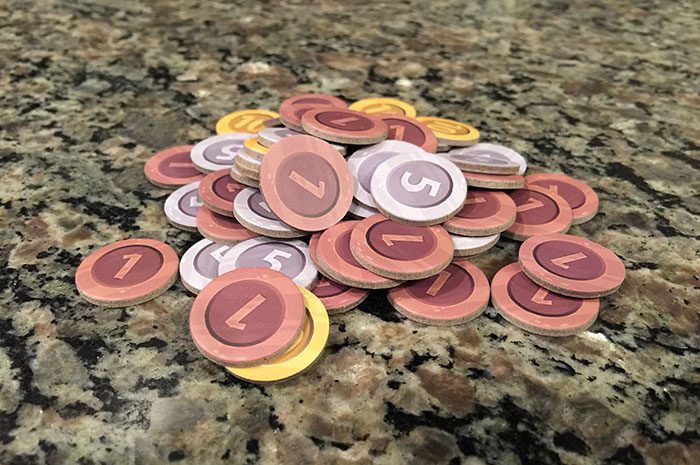
The only way to acquire specific ingredients is from the market and that takes money. While each player begins with $3, you won’t earn additional incoming until you finish your first menu item. Players do have the chance to discard any items in their hand at the end of the turn and draw new items, but there’s no guarantee those ingredients will be what you need. This means that if you spend all of your money early in the game on ingredients, you’re at the mercy of the deck to get useful ingredients to finish your burgers.
Building your Burger
After you’ve returned from the store, you’ll jump straight into the kitchen, cooking up a storm, and building up those burgers. You’ll only be able to place 3 ingredients across both of your bottom buns because true art simply cannot be rushed.
Burger Up uses a really interesting method of placing ingredients onto your burger. Each double-ended card has an icon in the bottom right corner indicating what type of ingredient it is: meats & patties, salads, cheese & egg, sauces, and buns. Each ingredient also has an icon in the middle right side indicating what sorts of ingredients can be stacked on top of it. Buns (bottom and middle) are considered “wilds” and allow other type of ingredients to be stacked on top of them. In this example the player has put down a beef patty, which can only have cheese on top of it. The cheese can only take a sauce on top of it, and so on.
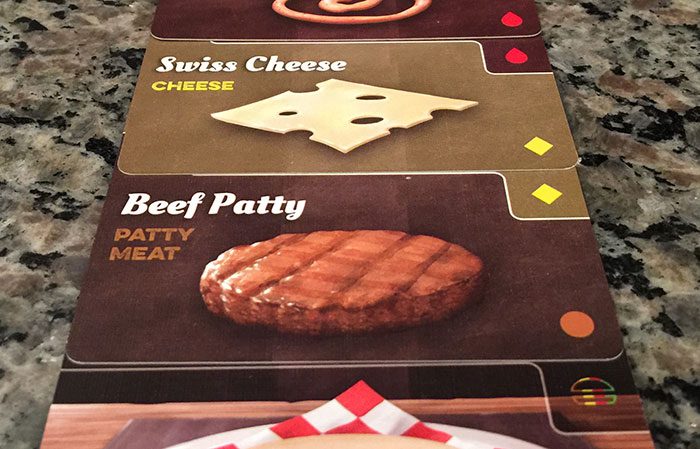
Players are attempting to build burgers of various sizes: a “sandwich” is 1-3 ingredients, while a “colossal” is 10 or more ingredients, with 2 other options in between. While the stacking approach is really interesting, and extremely thematic, it lends itself to another issue. If you’re trying to to construct an “Iron Giant” which requires 3 patties, and 10 or more ingredients, the stacking requirements are extremely restrictive. Since you’re only able to build two burgers at once, and there’s only 3 available orders (shared for all players), it’s easy to get stuck building a burger you can’t sell. The designers provide a spatula which allows you to rearrange ingredients between burgers, but that’s unfortunate because not only do you lose points when you use the spatula, you also might end up throwing away ingredients you paid for.
Burger Up
After you’ve purchased the choicest ingredients, and lovingly constructed your sandwich, it’s time to sell it! If you’ve kept your eye on the incoming orders you’ll know that Will over at table 15 really wants the O.G. Cheeseburger. So if one of your two sandwiches meets the criteria, then you’ll collect the top bun card, along with any money you get for the burger, and reset your stack.

This is really the last of the hurdles in the game. The rules allow for only 3 top buns which means in a 4 player game, 4 people are all going for the same three orders. If you spend 2-4 turns building out your burger, then someone comes along and scores it before you do, you’re potentially left with a burger that is worthless as is.
If, at the end of a player’s turn, the new orders stack can’t be refilled, then the game ends and whomever has the most money wins.
Thoughts
Let’s start off with the art and components of the game. They’re simply stellar. The cards and money tokens are nice and thick, with really high quality finish and printing. The illustrations of ingredients, and top buns are mind-bogglingly realistic. Stephen Gibson has done an astounding job with the hyper-realistic ingredients.

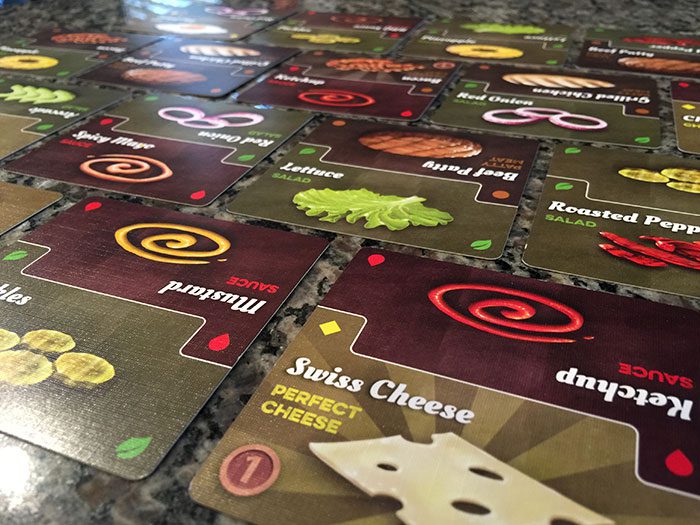
In our plays we found that it overstays its welcome somewhat. In a 4 player game you’re using 18 top bun cards, but because you might start off with 3 orders all of which require 10+ ingredients the game can be slow to start.
Running out of money is a real issue in this game. If your spend on ingredients early on, you’ll be stuck until with what you can draw from the deck until you complete your first burger. You’re also going to be at a real disadvantage to players who had good card draws, or who come before you in turn order. Since every player is able to put out the same number of ingredients per turn, if one player just has better cards they’ll be able to score that burger you’re working towards before you. That means you’ll have wasted time, ingredients, and potentially money, exacerbating the issue.
We also had trouble with the top item of any stack. Because the cards are double ended, but you’re only using a single side, the unused side still shows up at the top of the stack and will constantly confuse you when you’re counting ingredients, or trying to figure out what ingredient can come next.
Alternative Play Options
After my groupd finished we sat for a while discussing the game, and came up with a few options which we thought could streamline gameplay without nothing more than a change to the rules.
Secret Burger – Each player receives one of the unused top bun cards and keeps it secret. This is something that only they can work towards, and would make the issue of someone stealing a burger out from under you less impactful. Perhaps you even get a slight penalty if you have this top bun in your hand at the end of the game.
More top buns – We all agreed that having only 4 top buns in a 4 player game was a big challenge. Laying out a larger number of top bun cards at the beginning of the game makes this less of an issue and would really streamline game play.
Basic Burger – Another option could be to have a basic hamburger / cheeseburger that’s available to anyone: meat, cheese, sauce, etc. You don’t score a top bun card for this, but you might get $1 for it, which would at least let you get some money for ingredients you have.
Selling Ingredients – At the end of a turn, players can choose to discard as many of their ingredient cards as they like, and draw back up to their hand limit of 4 cards. This is a great way to get rid of undesirable ingredients, but doesn’t guarantee you’ll get anything better. Perhaps players could “return” ingredients back to the market and receive some small amount of money in return. This might also be thematic, receiving a “credit” for bad or lower quality ingredients.
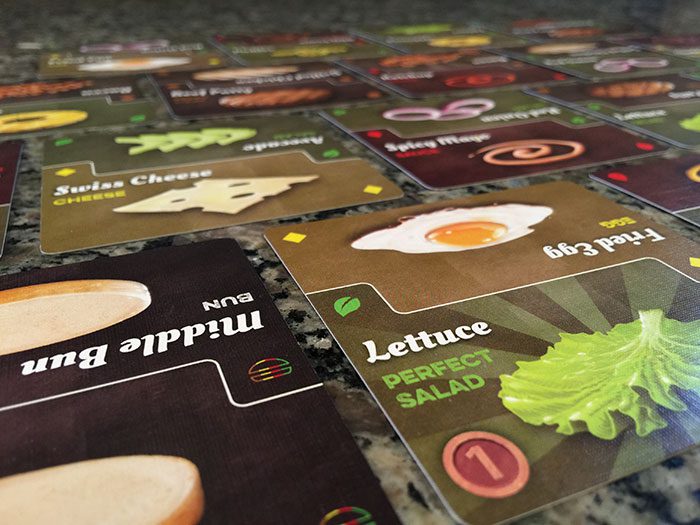
Final Thoughts
Burger Up has a lot of things going for it. The theme is killer, the art is amazing, and honestly the gameplay is good, if not great. Pull a few levers here and there, tighten up the game play and I think you’d have a game that any gourmet would love. But as it stands now every time I open Burger Up my mouth starts watering, my stomach rumbles, but ultimately I’m left still hungry when the meal is over.


